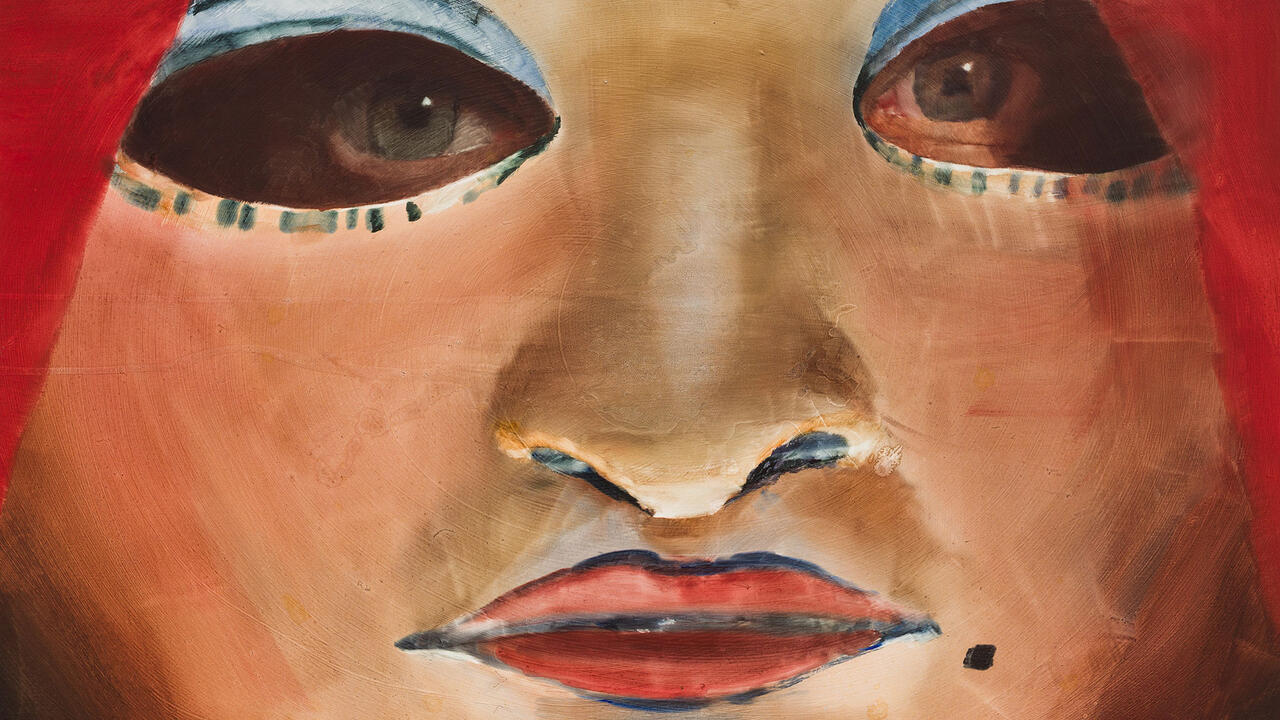Edgar Orlaineta

History is the centrifugal force operating within the walls of Edgar Orlaineta’s exhibition ‘La Historia, Ella Misma y Yo’ (History, Itself and I). It ebbs and flows through sculptures that operate as historicized, hybridized, then syncretized forms, expressing an obsession with modern art and design.
The space is hidden behind an elevator shaft and along one of Museo del Chopo’s many stairwells. Compared to the other window-lined, cavernous spaces that define the museum, the gallery given over to Orlaineta’s work is closed, quiet, warm and meditative. It is a long and narrow hall punctuated with a bright red wall and filled to the brim with an ambitious number of sculptures and works on paper. Things lean against the wall, jut into the normal flow of traffic, are suspended from the ceiling. Yet, each thing that threatens to make the room feel like it is about to burst its seams is placed with obsessive consideration which makes everything feel perfectly balanced both horizontally and vertically.
A juxtaposition of contemporary furniture ‘showroom’ and sculpture garden, the exhibition walks a fine line between beautifully designed functional furniture and works appropriated from art history. Modernist designs are the inspiration for forms that Orlaineta fabricates, then manipulates. Here the artist references Isamu Noguchi, Charles and Ray Eames, Joan Miró, Harry Bertoia and Alexander Calder. What follows is the creation of new relationships between ethnographic histories and qualities – both art-historical and cultural – where one influence informs another, and so on, until a new visual dialogue emerges.
Eames chairs are stripped of their function and converted into sculptures and canvases for painting. The legs of the Classic DSW fibreglass chair are extended with a delicately woven metal and rise up through the gallery. The backrest of the wood LCW chairs have either been extended many feet above the actual chair in an absurd manner, or the back-rest has been removed altogether, providing a playful canvas for the artist to paint a series of ‘masks’ that directly reference many of the players from the Modernist era. Eames ‘hang it all’ hooks are used to create prototype objects that could be interpreted as chairs, coat hangers or decorative home furnishing. Clusters of pristine white Bertoia chairs dot the space in welded hybrid configurations that hang upside down and sideways from the ceiling, or seat-up on the floor, acting as a glorified fruit basket. Tables inspired by Finnish artist and designer Tapio Wirkkala have playful sculptures imbedded in them and protruding from them, generally making them unusable as clean surfaces. Everything in the space, as well as the space itself, has multiple uses, and is meant to have what the artist refers to as ‘biomorphic’ qualities.
‘La Historia, Ella Misma, y Yo’ is part of Oraineta’s dialogue about his own relationship within history. While manipulating this history to include his own voice, the Modernist references are converted into beautiful objects that traverse definition and function; a conversion that evokes a myriad of uses, references and associations.














